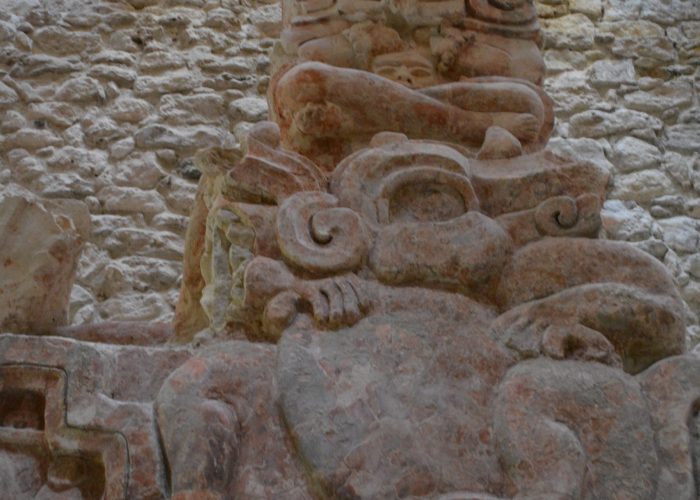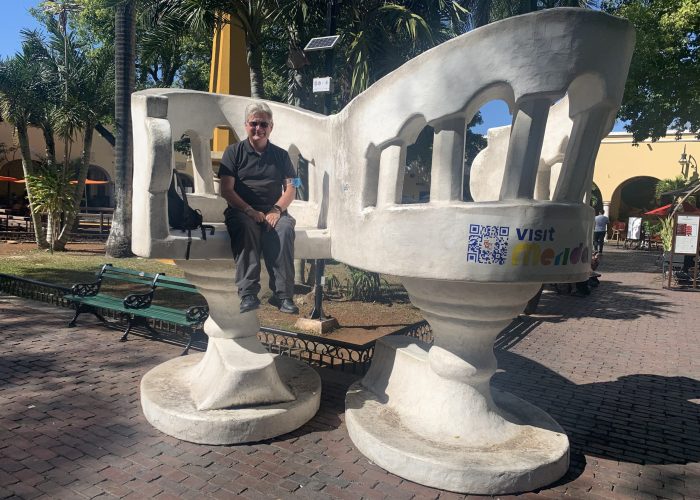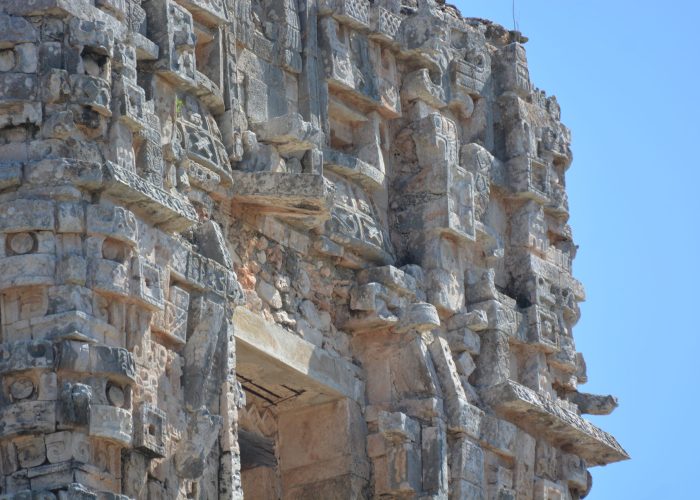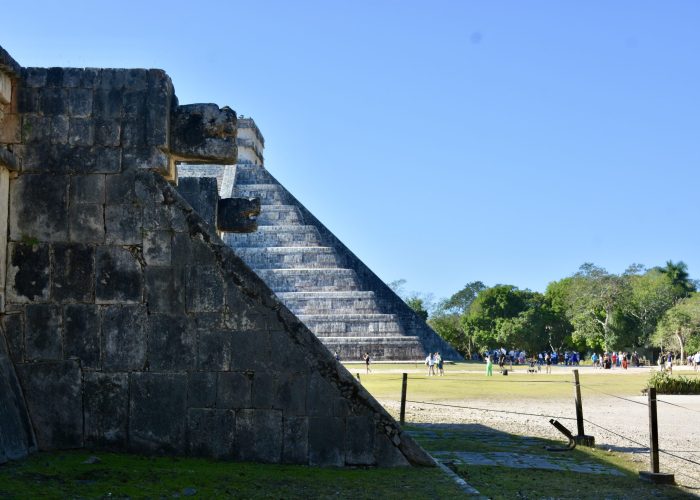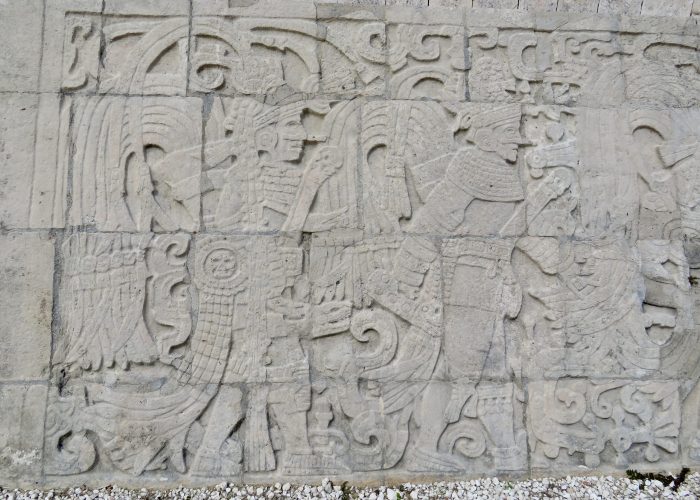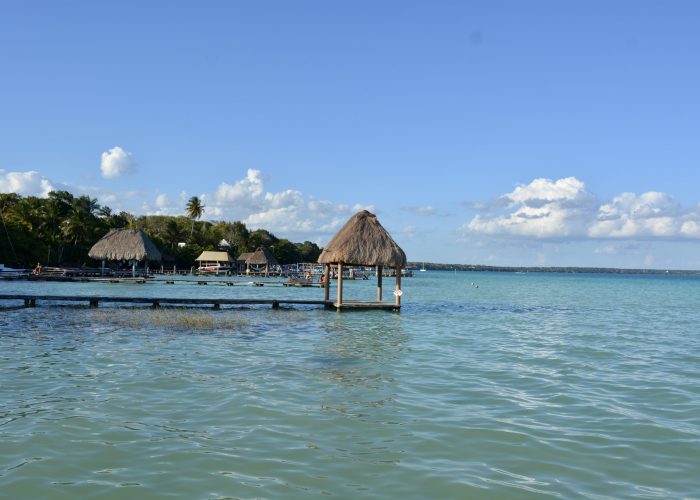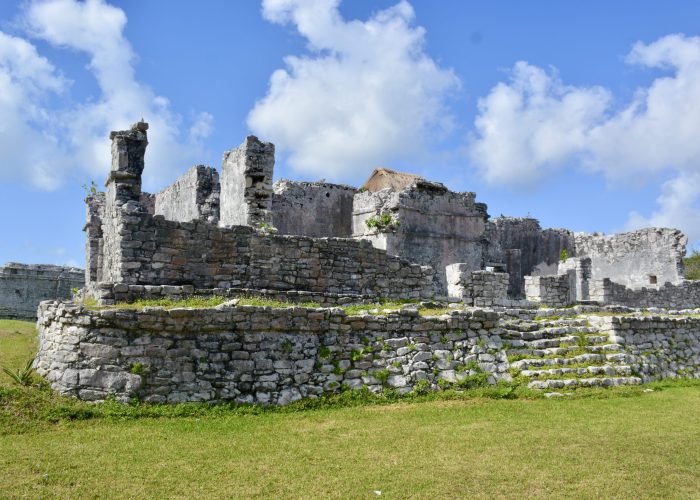The final leg of our Mexican tour was the Yucatan Peninsular. From Palenque we took the bus to the old colonial port of Campeche. Because the Yucatan is very flat, mostly less than 50 metres above sea level, the roads are relatively fast and also well made. Investment in the transport infrastructure has also been important to support the key tourism industry in the peninsular. Campeche State forms the Western side of the peninsular and is the quietest of the three states. The number of international tourists increase exponentially the closer you get to Cancún.

The town of Campeche is largely surrounded by its original walls and most of the buildings are low rise, mainly just one story, in the traditional Spanish colonial style. There is a fair amount of new money coming in from Americans and others to do up many of the old buildings. Overall the city is fairly quiet and peaceful and feels pretty safe. At the time of our visit the main Zocalo was being repaired and the government buildings repainted to welcome a visit from the Mexican President. Most of the activity takes place on a pedestrianised road one block away from the main square, where there are a number of street restaurants and bars.

In the city walls there is a small Mayan museum, and in Forte San Miguel a few kilometres outside the city is a bigger museum. Both are worth visiting and contain some of the finer artefacts from the Mayan site of Calakmul deep in the South of Campeche State close to the Guatemalan border.

We took a day trip to Calakmul, which of all the UNESCO Mayan Sites in Mexico is the remotest and hardest to get to by public transport. There are visitors who drive there in hire cars from other parts of the Yucatán, especially Chetumul. Our guide for the day was Wilbert, who was excellent and provided a lot of useful information about the site and the Mayans more generally, and also some of the local wildlife too.
Before reaching Calakmul we visited the smaller site of Balamku which is interesting because inside one of the pyramids you can see some of the original carvings representing the local kings at the time. While some have been looted, there is enough still preserved to get a good feel of what the original tombs were like. Also we pretty much had the whole site to ourselves.

Calakmul is further in the jungle and fairly close to the Guatemalan border. The site has three main pyramids, all of which can be climbed. The views from the top are impressive and you can see deep in to the surrounding jungle. In the classic Mayan period of around 600 to 900 AD there was a fierce intercity rivalry between Calakmul and neighbouring Tikal, currently in Guatemala. Ultimately Tikal defeated Calakmul and captured its kings, who would have been decapitated and paraded as the spoils of war. There are some good carvings of some of the kings in the various stelae on site, though many of the stelae stones are soft so much detail is lost.

From Campeche our journey took us to Mérida and the number of tourists increased exponentially. However Merida is large enough to absorb its many visitors. The main zocalo and other central squares in the city are full of life and very pleasant places to pass the time. Many Mexican cities maintain lively central squares and Mérida is no exception. In the evening on two of the nights we were in Mérida, there were public dancing displays with locals in their white embroidered costumes clearly enjoying themselves and generating a very welcoming atmosphere.
A little way out to the North of the city is the Gran Museo del Mundo Maya, which is well worth the effort of visiting – reasonably easy be public bus. The museum contains many artefacts, but what is especially interesting is that the exhibits are displayed in a way that connects everything to the modern Mayan people. Also importantly are stories about the green cross revolution in the 1910s and also the conquest together with how the Franciscans introduced the Catholic Church and its subsequent fusion with more traditional beliefs.

From Merida we took a day trip to Uxmal, one of the later Mayan sites and far enough away from Cancun so as not to be too crowded by day trippers. There are not many options to stay nearby, hence the most practical way to visit is by a day trip from Merida. On entry the Temple of the Magician dominates the site. The temple unlike other Mayan temples we visited has rounded edges and is also quite well preserved, with detailed carvings clearly visible at its summit.

There are also some good carvings on the royal palace and the walls are largely complete giving a decent impression of the overall scale of the original city. On our way to Uxmal we visited the smaller site of Kabah. Here there are the remains of some detailed carved frescos, some of which are also being actively restored.

The whole of the Yucatan peninsular contains many cenotes, basically underground flooded caverns, often linked together to other cenotes with underground rivers. Overall the Yucatan is very dry, and the soil quite poor, but the cenotes and underground rivers provide an important water source. We went to Cenote Sambula just south of Mérida. The roof of the cave was full of nesting birds and bats.
From Mérida we took the short bus journey to Piste, the small town next to Chichen Itza. Chichen Itza is one of the so called new wonders of the world and is on most peoples must see site in all of Mexico, it is also close enough to Cancún to be a manageable day trip. The advantage of staying near the site is that you can get a good couple of hours there before the bulk of the visitors arrive.

The main pyramid, El Castillo does live up to the hype and is set in a reasonably large open space where you can appreciate the scale of it and its symmetry. Allegedly each side has around 91 / 92 steps to the top , which taken together represent the number of days in the calendar year.

The main ball park is nearby, and it is probably the largest ball park of all the sites. The sides are very tall and contain stone rings that the players try to get the ball through. On the walls are a number of detailed carvings, including images of the winning captain with the decapitated head of the loosing captain and blood in the form of snakes coming out of the loosing captain’s body. While no one knows fully what happened during the games – certainly the stories vary from site to site depending on the guide.
Chichen Itza is a large site, with many other buildings, and because of its size can just about absorb the number of visitors it has.

The small town of Valladolid, about 50kms out of Chichen Itza was our next destination. It has a decent feel and is often used as good transit point for visitors travelling round the Yucatan. Valladolid was important during the mayan uprising in the 1910s and was captured by the Mayans, leaving only Merida and Campeche under government control. The story of the green cross as a symbol of the combination of Catholicism and more traditional Mayan beliefs is important here and in the smaller towns to its East.

Bacalar just North of Chetumul and the Belize border is becoming one of the must visit sites in the Yucatan. Bacalar is situated on the lake of the same name, which in the light shines in a variety of different shades of blue, and is stunningly beautiful. There are many bars and hotels with lakeside fronts where you can swim and simply relax and enjoy the views.
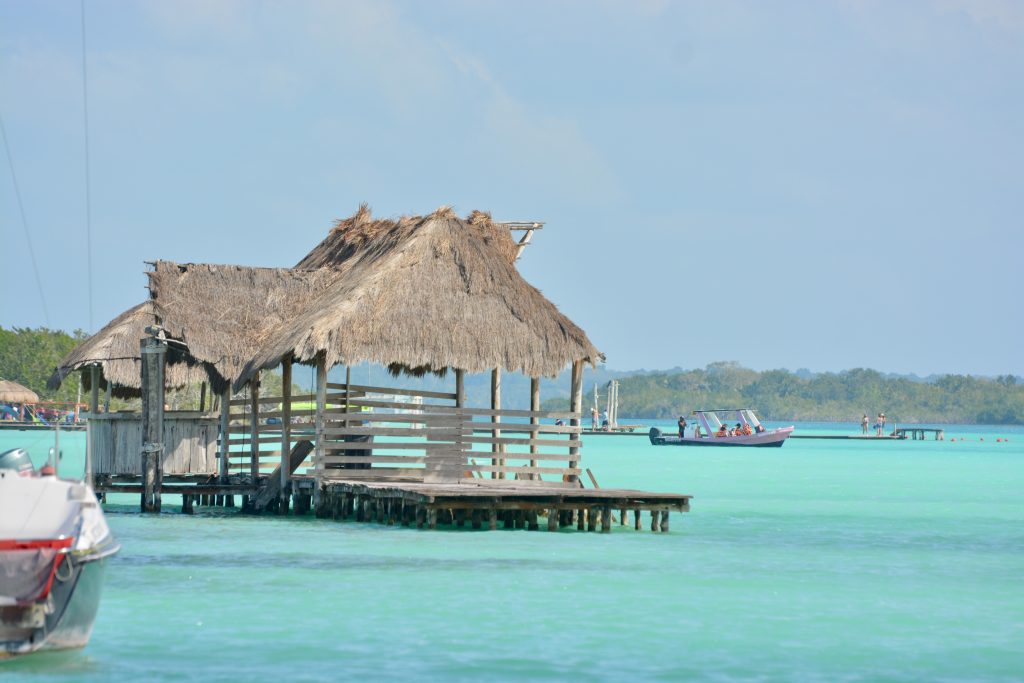
A boat trip on the lake will take you to a number of different locations, some of which enable swimming of the boat in the crystal clear waters. The town has a number of backpackers, many have discovered it because places like Tulum have become more expensive and crowded. Currently the town is more than large enough to be able to cater for its current number of visitors and also there are enough bars and good restaurants to make it a good destination in any Yucatan itinerary.

North of Bacalar we visited our final Mayan site at Tulum. While not a UNESCO site, the ruins at Tulum are still worth visiting, especially given its unique coast setting, with views of temples and the sea in the same shot. Tulum does get crowded and its best to visit when it opens at 8am to avoid the worst of the crowds.
The town of Tulum is essentially a tourist town, with many hotels and restaurants. While it is more expensive than elsewhere, there is a lot of choice of places to eat and also some good quality ones too.

After Tulum we finished our Mexican tour in the resort town of Cancún, a very busy town, with many visitors and lots of shopping malls. The Hotel Zone dominates the beach front area, but the old centre has a much more local feel and some more reasonably priced places to eat.

It is easy to see why the beaches at Cancún have made it such a tourist mecca. Plenty white sands and bright blue seas. Many of the hotels back straight onto the beach, so there are limited areas which allow the public access to the beach outside from the hotels.




